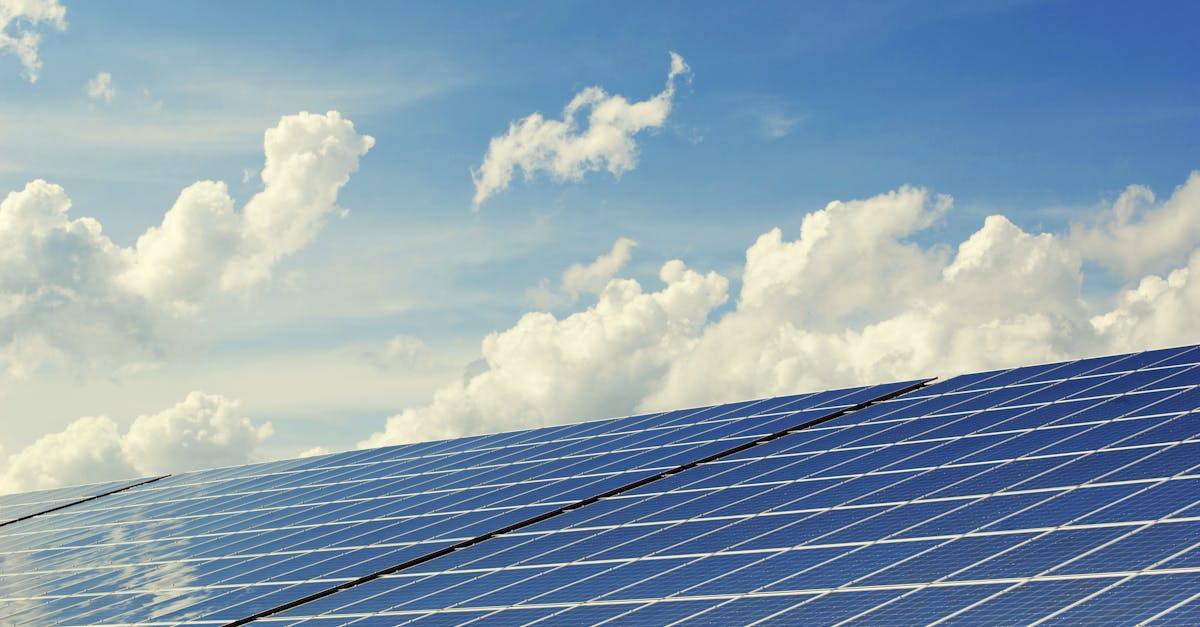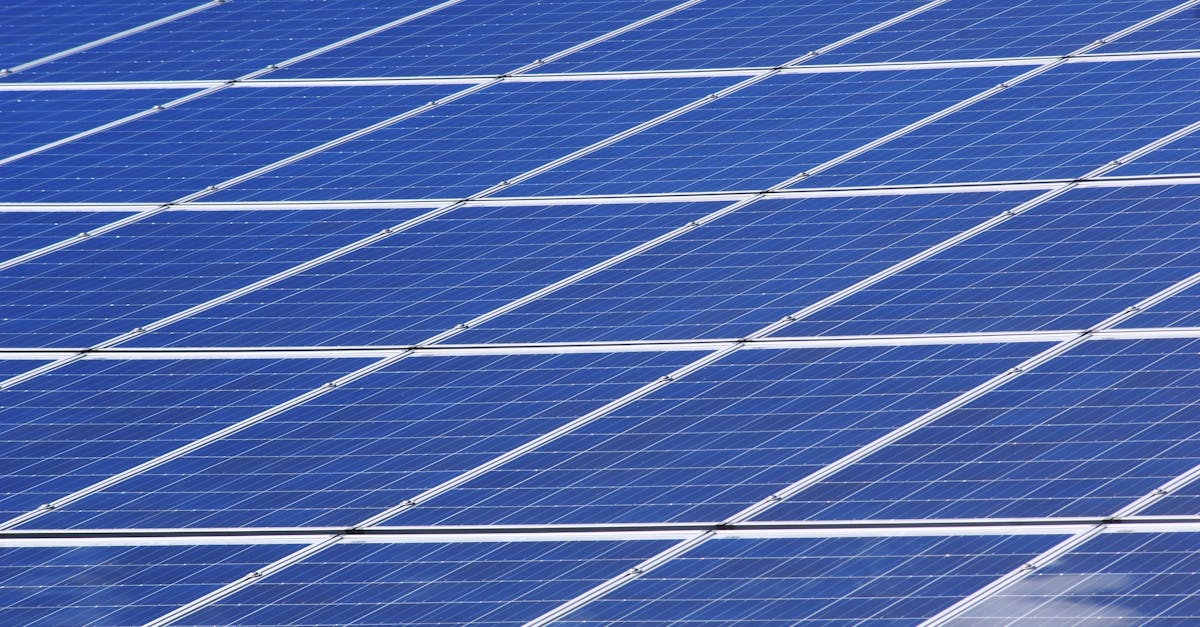Empowering Sustainable Living: A Comprehensive Path to Renewable Energy Adoption

In today’s world, the transition to renewable energy is not just a trend but a crucial step towards a sustainable future. Switching to Renewable Energy at Home: A Practical Guide aims to equip homeowners with essential knowledge and practical steps to embrace renewable energy solutions. As we navigate the intricate landscape of environmental challenges, recognizing the significance of renewable energy becomes paramount. This guide seeks to encourage and empower individuals to harness cleaner, more sustainable energy sources within their own households, positively impacting both the environment and their long-term energy independence.
1. Understanding the Importance of Renewable Energy
Thank you for reading this post, don't forget to subscribe!
Understanding the importance of renewable energy involves recognizing its profound impact on our environment and the crucial role it plays in ensuring sustainability for future generations. With technological advancements and a growing global consciousness, the embrace of renewable energy sources offers a beacon of hope in our quest for a cleaner, healthier planet. By delving into this understanding, individuals can unlock a sense of empowerment, knowing that their choices directly contribute to a more sustainable future.
Renewable energy holds the promise of mitigating environmental damage and addressing the urgent need to reduce carbon emissions. It paves the way for a cleaner and more stable climate, offering a chance to restore ecological balance. Embracing this importance fosters a sense of pride in knowing that we are part of a larger movement toward environmental stewardship, where each small step yields collective progress.
Moreover, recognizing the significance of renewable energy fuels a sense of responsibility and accountability. It encourages individuals to drive positive change, delivering a profound message that the journey towards sustainability begins right at home, with every choice we make and every sustainable action we take.
Environmental Impact
The environmental impact of renewable energy is a beacon of hope in our enduring battle against climate change. By exploring the remarkable benefits of renewable energy, we uncover a landscape where cleaner air, reduced pollution, and a healthier ecosystem become a tangible reality. Embracing renewable energy sources presents a compelling opportunity to significantly curb carbon emissions, steadily reversing the detrimental effects of non-renewable energy on our planet.
Renewable energy, from solar and wind power to geothermal systems, offers a resounding promise of environmental rejuvenation. It stands as a living testament to our capacity for positive change, underscoring a trajectory towards a greener, more sustainable world. As we explore these environmental benefits, it becomes abundantly clear that every step toward renewable energy is a step toward healing our planet, nurturing its natural beauty, and safeguarding its diverse ecosystems.
Notably, the transition to renewable energy carries the potential to reshape our environmental legacy, ushering in an era where harmony between human progress and ecological preservation becomes the norm. Embracing these advancements yields a brighter, cleaner future—a gift to both current and future generations, encouraging responsible and sustainable stewardship of our planet.
Sustainability and Energy Independence
Sustainability and energy independence represent vital pillars supporting a future where our energy needs are met harmoniously with the preservation of our planet. Understanding the importance of sustainability delves into a world where today’s actions directly shape tomorrow’s possibilities. Embracing renewable sources promises a trajectory towards a more self-sufficient, resilient energy landscape, where communities and individuals become empowered agents fostering a sustainable energy future.
Taking steps towards sustainability is not just a commitment to our environment; it is an investment in our collective future. Renewable resources offer resilience against energy volatility, presenting a pathway to energy independence that transcends geographical and socio-economic boundaries. By actively engaging with sustainable practices and renewable sources, individuals and communities alike contribute to a more stable and secure energy landscape, fostering a sense of confidence in the reliability of our energy supply.
Moreover, achieving energy independence through renewable sources holds the promise of economic empowerment and enhanced security. It paves the way for reduced reliance on non-renewable energy imports, fortifying local and national economies. By embracing a diverse array of sustainable energy solutions, we cultivate a landscape where energy security and environmental sustainability intersect, propelling us towards a brighter, more self-reliant energy future.
2. Assessing Your Home’s Energy Consumption

Evaluating your home’s energy consumption offers a pivotal starting point for embarking on a journey towards renewable energy. By taking a closer look at your current energy usage, you gain valuable insights that can drive meaningful change. This assessment is not just a process; it’s a pathway to realizing the transformative potential of renewable sources, laying the groundwork for a more sustainable and efficient energy footprint within your home.
Conducting an energy audit involves more than just tallying numbers; it’s an exercise in empowerment. It allows you to identify areas where energy is being underutilized or wasted, pinpointing opportunities for integrating renewable energy solutions. Each discovery serves as a stepping stone towards a more sustainable and cost-effective energy strategy, offering a tangible way to reduce your environmental impact while enhancing your home’s energy efficiency.
Moreover, this assessment fosters a sense of connection between your energy usage and its broader impact. It accentuates the notion that every kilowatt-hour saved through conscientious energy practices translates into a more sustainable, eco-friendly lifestyle. It’s an encouraging process, instilling a sense of agency and purpose—a gentle nudge towards a future where every action contributes to a cleaner, more sustainable world.
Energy Audit
Conducting an energy audit within your home embodies the first profound step toward embracing a more sustainable and efficient energy lifestyle. This empowering process involves a comprehensive assessment of how energy is utilized within your living space. By delving into this fundamental exploration, you gain a clearer understanding of energy usage patterns, unfurling opportunities for optimization, and the integration of renewable energy sources, ultimately paving the way for a more sustainable and cost-effective energy strategy for your household.
The energy audit is not merely a routine check-up; it’s an eye-opening journey that invites you to become an active participant in shaping a greener future. As you proceed through this audit, you uncover insights into energy consumption habits and inefficiencies, fostering an environment of empowerment. Every revelation, no matter how small, represents a beacon of transformative potential, offering tangible avenues for reducing energy waste and fostering greener, more environmentally conscious living.
Moreover, the energy audit isn’t just about numbers; it’s about instilling a sense of purpose and responsibility. With every light switch assessed and every appliance scrutinized, you become a steward of sustainable living, embracing a lifestyle where every kilowatt-hour saved translates into a meaningful step toward a cleaner, more efficient, and eco-friendly home.
Identifying High-Impact Areas
Identifying high-impact areas within your home marks a significant stride towards a more sustainable and environmentally conscious lifestyle. By shedding light on key areas primed for renewable energy implementation, you are poised to make a meaningful difference in your energy usage and carbon footprint. This exploration serves as a cornerstone for focusing your efforts where they can yield the greatest positive impact, ensuring that your journey towards renewable energy integration is both effective and rewarding.
A crucial part of this process involves pinpointing spaces where energy consumption is at its peak and where inefficiencies are most prevalent. Whether it’s optimizing heating and cooling systems, leveraging natural light, or upgrading to energy-efficient appliances, each identified area represents an opportunity for impactful change. This approach underscores the tangible ways in which everyday decisions can significantly contribute to a greener, more sustainable home environment.
Moreover, spotlighting high-impact areas instills a sense of purpose and direction. It empowers you to take practical steps toward a more energy-efficient and environmentally responsible lifestyle. By recognizing these focal points, you embody an agent of change, steering your household towards a future where sustainability and efficiency go hand in hand, ultimately contributing to a cleaner, healthier planet for generations to come.
3. Exploring Renewable Energy Options
Exploring renewable energy options for residential use opens a world of innovative and sustainable technologies that are reshaping the way we power our homes. From solar power to wind energy and geothermal heating, the array of available choices offers a powerful testament to the possibilities of a cleaner, more sustainable energy future. Each option invites homeowners to embrace modern solutions that not only reduce their environmental impact but also pave the way for long-term energy cost savings, ultimately transforming houses into eco-friendly havens.
Solar power emerges as a leading contender, offering homeowners a chance to harness the sun’s inexhaustible energy through photovoltaic panels. This renewable energy source not only reduces electricity bills but also contributes to a lower carbon footprint, marking a significant stride towards sustainability. Similarly, wind energy presents an exciting opportunity, especially for homes situated in areas with favorable wind conditions, offering a reliable and renewable energy source that complements a sustainable lifestyle.
Moreover, geothermal heating and cooling systems showcase the potential for energy efficiency and sustainable comfort. By leveraging the Earth’s consistent underground temperatures, these systems provide reliable heating, cooling, and hot water while significantly reducing energy consumption and greenhouse gas emissions. Together, these renewable energy options offer homeowners a chance to maximize their environmental impact and energy savings, inspiring a brighter tomorrow for both their homes and the planet.
Solar Power
Solar power stands as a beacon of innovative and sustainable energy, offering a myriad of benefits and a straightforward installation process for residential settings. By embracing this renewable energy source, homeowners embark on a journey towards a greener, more cost-efficient, and eco-friendly way of powering their homes. The benefits of solar power extend beyond just energy savings; they include a significant reduction in carbon emissions, which directly contributes to global efforts to combat climate change. Integrating solar panels on residential properties not only represents a wise investment in long-term energy savings but also fosters a sense of environmental responsibility, underscoring the homeowner’s commitment to a sustainable future.
The installation process for solar panels epitomizes a seamless and empowering journey towards sustainable living. With advancements in technology and streamlined installation methods, the process has become increasingly efficient, making it easier for homeowners to adopt solar power. Beyond the initial installation, the transition to solar power opens doors to a future where homeowners experience decreased dependence on traditional energy sources, thus contributing to a more stable and eco-conscious energy landscape.
Moreover, equipping residences with solar panels expands the horizons for sustainable living, enabling homeowners to actively participate in a broader movement towards environmental stewardship. It not only empowers individuals to take control of their energy consumption but also sets the stage for a cleaner, more sustainable world—one solar panel at a time.
Wind Energy
Exploring the potential of wind turbines as a renewable energy source for your home opens a world of sustainable and eco-friendly possibilities. Wind energy stands as a powerful testament to harnessing nature’s forces to propel homes towards a greener, cleaner energy future. By examining the potential of wind turbines, homeowners not only embrace a renewable energy solution that significantly reduces their environmental impact but also tap into an energy source with the capacity to generate substantial electricity savings over time. The integration of wind turbines on residential properties offers a dynamic path towards a more self-sufficient and sustainable energy landscape, aligning with a broader global shift towards renewable energy adoption and environmental stewardship.
The utilization of wind energy through turbines encapsulates a journey towards energy empowerment and environmental responsibility. While traditional energy sources often come with ongoing costs and environmental implications, wind energy’s abundance and sustainability offer homeowners a chance to actively participate in shaping a cleaner, more sustainable world. Moreover, the installation of wind turbines on residential properties embodies a transformative step towards energy efficiency and reduced dependence on non-renewable energy sources, thus contributing to a more stable and eco-conscious energy landscape.
Embracing wind energy via turbines not only offers an opportunity for energy autonomy but also serves as a tangible demonstration of a commitment to a sustainable future. The distinctive visual presence of wind turbines signifies a homeowner’s dedication to cleaner, more sustainable energy solutions, standing as a visible symbol of environmental responsibility and a beacon of hope for a greener tomorrow.
Geothermal Heating and Cooling
Geothermal heating and cooling systems offer a remarkable opportunity to transform residential buildings into beacons of energy efficiency and sustainability. By understanding these innovative systems, homeowners can unlock a pathway to a more eco-friendly and cost-effective approach to heating and cooling. Geothermal systems leverage the Earth’s stable underground temperatures, providing reliable heating in the wintertime and efficient cooling during the hot summer months. This technology not only minimizes energy consumption but also significantly reduces carbon emissions, marking a profound step towards a greener and more environmentally responsible home.
Embracing geothermal systems presents homeowners with a unique chance to not only reduce their carbon footprint but also foster long-term energy cost savings. These systems offer a stable, constant, and renewable energy source with the potential to provide year-round comfort, all while significantly contributing to the overall sustainability of residential buildings. Moreover, the integration of geothermal systems shapes a homeowner’s journey towards environmental stewardship, showcasing a commitment to sustainable living and a more eco-conscious way of maintaining household comfort.
Understanding and adopting geothermal heating and cooling systems exemplify a significant stride towards a more sustainable and energy-efficient home. By exploring the full potential of geothermal technology, homeowners embark on a journey that not only promises reduced energy costs but also underscores their dedication to a brighter, more sustainable future, affirming renewable energy’s place at the forefront of residential sustainability.
4. Financial and Incentive Considerations

When considering the transition to renewable energy solutions, reviewing financial assistance, incentives, and tax credits becomes a pivotal step in making this sustainable shift both feasible and rewarding. Many governmental and non-governmental programs offer financial support and incentives for adopting renewable energy, making the path to a greener lifestyle both accessible and financially advantageous. Programs such as solar rebates, tax credits for energy-efficient upgrades, and low-interest loans create an encouraging landscape for homeowners looking to invest in renewable energy solutions.
The review of financial assistance and incentives not only makes the adoption of renewable energy more economically viable but also ensures that homeowners recognize the value of their eco-friendly choices. These incentives signify a collective commitment to environmental sustainability, inspiring a broad-reaching shift towards cleaner energy sources. Moreover, exploring and understanding the array of financial benefits underscores the larger societal support for renewable energy adoption, driving a culture of eco-conscious decision-making and responsible stewardship of our planet.
Furthermore, this review offers homeowners an opportunity to not only reduce their carbon footprint but also experience long-term energy cost savings. Beyond the immediate financial incentives, the lasting impact of these environmentally driven choices contributes to a brighter, more sustainable future. It’s a tangible way for individuals to not only embrace renewable energy but also actively participate in securing a more environmentally sound and cost-effective energy landscape for generations to come.
Government Rebates and Incentives
Researching government programs and rebates designed to support renewable energy adoption offers homeowners a gateway to a more sustainable and economically viable energy landscape. These incentives, often in the form of rebates, tax credits, and low-interest loans, signal a broader commitment to environmental stewardship at the governmental level, making the transition to renewable energy not only feasible but financially advantageous. By delving into these programs, homeowners can uncover a wealth of opportunities to invest in clean energy, while also contributing to a collective effort to combat climate change and reduce reliance on non-renewable energy sources.
Government rebates and incentives signify a practical embodiment of societal support for eco-friendly decisions. Homeowners who embark on the journey of renewable energy adoption not only benefit from immediate financial advantages but also promote a culture of energy efficiency and sustainability within their communities. These programs actively encourage a widespread shift towards cleaner energy, positioning eco-friendly choices as both responsible and rewarding.
Beyond the financial perks, these programs hold the promise of empowering homeowners to actively contribute to a greener future. By tapping into government rebates and incentives, individuals not only embrace a more sustainable lifestyle but also set in motion a positive ripple effect, championing the cause of renewable energy adoption and promoting a healthier, more environmentally conscious energy landscape for all.
Financing Options
Exploring financing choices for renewable energy installation unlocks a world of possibilities, making the shift towards clean energy not only accessible but also financially feasible for homeowners. Various financing options, including energy-efficient mortgages, personal loans, and leasing programs, create an encouraging environment for individuals looking to embrace sustainable energy solutions. By delving into these programs, homeowners can navigate a landscape where investing in renewable energy becomes an achievable and rewarding endeavor, marked by long-term environmental and financial benefits.
These financing options not only make renewable energy installation affordable but also cement a household’s commitment to a sustainable future. By opting for these programs, individuals not only reduce their carbon footprint and energy costs but also contribute to a collective effort aimed at combating climate change and promoting responsible energy usage. Moreover, these financing choices underscore the broader societal support for clean energy adoption, encouraging a widespread shift towards eco-friendly living while fostering a culture of environmental stewardship.
Furthermore, the availability of financing programs presents homeowners with an opportunity to invest in a brighter, more sustainable future. Embracing these financial options not only empowers individuals to make eco-conscious decisions but also sets the stage for a broader transition towards a healthier, more environmentally responsible energy landscape for generations to come.
5. Transitioning to Renewable Energy: Practical Steps
Transitioning to renewable energy is an empowering and tangible way to contribute to a greener, more sustainable future. By implementing renewable energy solutions in your home with a well-laid-out plan, you are taking significant strides towards reducing environmental impact and embracing long-term energy efficiency. The actionable plan involves a thoughtful consideration of available technologies, an assessment of your home’s specific energy needs, and an exploration of financial options to make the transition both seamless and cost-effective. With each step, your commitment to renewable energy becomes a beacon of hope for a brighter, cleaner world.
Practical steps toward renewable energy adoption signify a purposeful commitment to environmental stewardship and energy autonomy. By choosing reputable and experienced professionals for the installation of renewable energy systems in your home, you ensure a seamless transition marked by reliability and a focus on long-term sustainability. Beyond the installation, monitoring and maintenance of these systems are pivotal, ensuring optimal performance and efficiency while reinforcing a dedication to sustainable living.
Moreover, as you embark on this journey, recognizing the positive environmental impact of your switch to renewable energy becomes a source of pride and a catalyst for broader change. Each practical step towards renewable energy serves as a testament to your dedication to a greener, more sustainable world—where every effort, regardless of scale, contributes to a collective movement towards environmental consciousness and responsible energy use.
Choosing a Certified Installer
Choosing a certified installer for installing renewable energy systems in your home sets the stage for a successful and impactful transition to sustainable energy. Reputable and experienced professionals play a pivotal role in ensuring a seamless and reliable integration of renewable energy solutions within your household. Their expertise not only guarantees the efficient installation of solar panels, wind turbines, or geothermal systems but also ensures the long-term performance and sustainability of these essential upgrades. By selecting certified installers, you are not only investing in the proficiency of the installation process but also laying the foundation for a more sustainable and eco-friendly lifestyle.
The journey towards renewable energy adoption is reinforced by the engagement of certified installers, who bring not only technical expertise but also a commitment to quality and long-term reliability. Partnering with these professionals signifies a dedication to environmental stewardship, backed by a trust in their hands-on experience and knowledge. Their installation proficiency not only ensures a smoother and more efficient transition but also serves as a testament to the homeowner’s commitment to a greener, cleaner energy future.
In addition to ensuring a seamless installation, certified professionals offer an added layer of assurance and quality control, providing homeowners with peace of mind and a sense of confidence in the reliability of their renewable energy systems. Their expertise is not just about installation but also centers on guiding homeowners towards sustainable energy practices, marking a profound step in fostering an environmentally conscious and responsible approach to household energy usage.
Monitoring and Maintenance
Ensuring the ongoing maintenance and monitoring of renewable energy systems is a vital aspect of maximizing their efficiency and longevity. Understanding these essential practices underlines an enduring commitment to an eco-friendly and sustainable energy landscape within your home. By regularly monitoring the performance of solar panels, wind turbines, or geothermal systems, you not only ensure optimal efficiency but also gain the opportunity to appreciate the tangible impact of your environmentally conscious choices. In addition to monitoring, proactive maintenance is key to sustaining the longevity and effectiveness of these renewable energy upgrades. By staying proactive, you guarantee that the systems continue to operate at their best, providing long-term benefits for both the environment and your household’s energy consumption.
Incorporating ongoing monitoring and maintenance as part of your household routine signifies a dedication to the enduring performance and sustainability of your renewable energy systems. Monitoring not only allows you to track energy production but also invites you to observe your environmental contributions. Moreover, by conducting routine maintenance, you are actively safeguarding your investment in sustainable energy solutions, ensuring that they continue to operate at peak performance while minimizing the need for future repairs or replacements. This proactive approach signals a commitment to a greener, more eco-conscious lifestyle, reinforcing the impact of each energy-efficient decision made.
Understanding the significance of ongoing maintenance and monitoring transcends mere household upkeep; it represents a larger contribution to a cleaner, more sustainable future. By actively engaging with the care of these systems, homeowners become agents of environmentally responsible living, ensuring that their renewable energy solutions continue to yield both practical and ecological benefits. This diligent approach not only secures the long-term prosperity of these systems but also upholds a broader commitment to sustainable energy usage and environmental stewardship.
Celebrating Your Positive Impact
Switching to renewable energy represents an extraordinary journey towards a more sustainable and eco-conscious lifestyle. Celebrating the positive environmental impact of this transition marks a momentous recognition of the wider significance of your choices. By embracing renewable energy, you actively contribute to a cleaner, healthier planet, reducing carbon emissions, and fostering a brighter future for generations to come. It’s a cause for celebration—a reminder of the lasting impact of each eco-friendly decision made.
Recognizing the positive environmental impact of your switch to renewable energy serves as a testament to your commitment to environmental well-being. Each kilowatt-hour generated from sustainable sources represents a direct contribution to a cleaner energy landscape, further solidifying your dedication to responsible energy usage and a more eco-conscious approach to daily living. Moreover, this celebration serves as a reminder of the collective impact of individual actions, inspiring a broader shift towards sustainable energy choices and environmental stewardship.
Beyond the more tangible benefits, celebrating the positive environmental impact of your renewable energy switch signifies an enduring commitment to a more sustainable, eco-friendly lifestyle. It embodies the recognition of a larger cultural shift towards cleaner energy sources and a steadfast dedication to a healthier, more environmentally responsible future. Your celebration of this positive impact represents not just a personal milestone but a recognition of the broader significance of advocating for renewable energy and environmental consciousness.
- Which renewable energy source is known for harnessing the sun’s inexhaustible energy for residential use?
a) Wind energy b) Geothermal heating c) Solar power d) Hydroelectric power
- What is one of the key benefits of geothermal systems for residential buildings?
a) They require regular maintenance b) They rely on fluctuating energy sources c) They provide reliable heating and cooling d) They contribute to increased carbon emissions
- Why is choosing a certified installer for renewable energy systems important?
a) They guarantee lower energy production b) They often lack proper credentials c) They uphold environmental stewardship and ensure efficient installation d) They are generally more expensive
c, c, c




